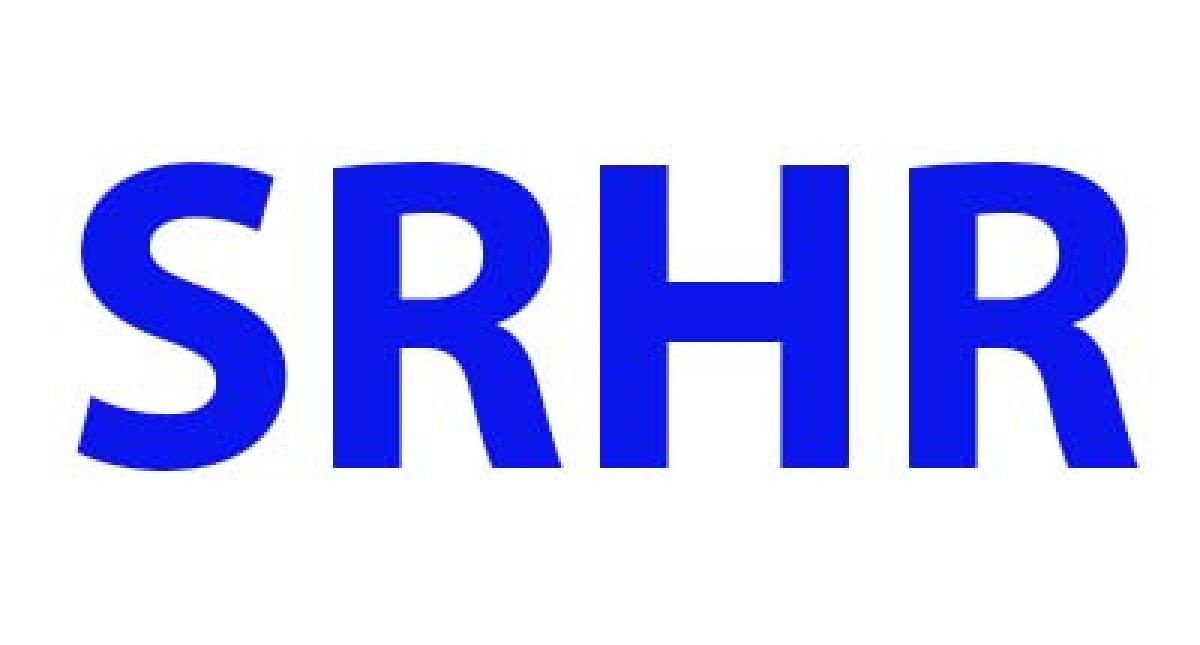Live
- GMR Airports Unveils AI-Powered Digital Twin Platform to Transform Airport Operations
- India poised to become leading maritime player: PM Modi
- Top Causes of Kidney Stones and How to Recognize Silent Symptoms
- India’s renewable energy capacity logs 14.2 pc growth at 213.7 GW
- Winter Session of Odisha Assembly adjourned sine die
- Biden calls Trump's tariff approach 'major mistake'
- After Drama Over Eknath Shinde’s Chief Minister Race, Maharashtra Cabinet Formation Faces New Tensions
- Egyptian FM, Blinken discuss recent developments in Syria
- Iran's supreme leader says Syria's developments result of US-Israeli 'plot'
- Elon Musk to Purchase $100 Million Luxury Mansion Next to Donald Trump's Mar-a-Lago, Report Reveals
Just In

Bangladesh: How SRHR Relates SDGs?. Bangladesh constitutes 49.40% female populations (World Bank, 2013) and see the case where nearly half of total human resources, doing all the households works, having no convertible economic values or due recognitions to be benefited.
Bangladesh constitutes 49.40% female populations (World Bank, 2013) and see the case where nearly half of total human resources, doing all the households works, having no convertible economic values or due recognitions to be benefited.
Now Bangladesh sustains 7% GDP growth (Dhaka Tribune)—2nd among top 10 countries, but it can’t be reference to sustainable development, when MDGs (1) poverty, (3) women empowerment and (7) environmental sustainability remain largely unmet (Prothom Alo). Failure in MDG 3 cause to slow female literacy rate, now only 53.4% % (Mundi, 2011), among most illiterate nations, ranking 179 (World by Map). This statistics would ultimately hinder Bangladesh in her way to achieve SDGs 1, 2(poverty), 5 (women empowerment), and 13, 15 (climate).
Considerations: Bangladesh has so far achieved two SRHR goals of MDGs— reduction of infant mortality and improvement of maternal health. Here two MDG goals, yet to attain are interlinked—female literacy rate affecting women empowerment scenario. Analyzing the correlations, we find today’s policy of subsidized and free education critically fails to bring required number of girls to the schools. It happens because of, mostly two reasons—other associated expenditure which girls cannot afford to continue education and second, why they should spend time and age in academia, when they are not returned with employment, other than stereotyped housewives.
Recommendations: in order to increase, the female literacy rate leading them to the employment, which is supposed to increase the existing rate of 25% women employment (The Daily Star), while reducing Violence Against Women (VAW) in Bangladesh.
The following policy options can accelerate the curative measures in SRHR scenario of Bangladesh.
Academic policy:
1. Inclusion of comprehensive SRHR education in National Curriculum, especially at earlier stage of 7/8 grade.
2. Scholarships and subsidies in women higher studies, already we have bachelors level, but we need to have at higher studies so that women can grow scholar to think upon their situation and prescribe policy options for the agencies
Employment opportunities
1. Massive scaled creating employability through vocational education
2. Stopping to send women slaver in Middle Eastern countries facing brutal sexual violence and to send our trained and educated women in prestigious and professional areas like nurses and normal professionals in abroad, if it is so required to expatriate them.
Legal assurance:
3. Strengthening the anti-sexual violence laws and regulations, mostly done with women
4. Religious misinterpretation of Holy Scriptures will strictly be prohibited, Fatwa (religious explanation) will be banned, village justice should be stopped, which violate women’s dignity and personal life
5. Property entitlement
6. Women to decide upon sexual rights, reproductive independence
Dimensional participation
7. Women in sports and cultural participation
8. Encouraging families to maintain parity among boys and girls during childhood period
9. Women in activism, women leadership and NGO spread at root-level
These are 9 policies in total set of recommendations, which can cure and surgery the cancer of women subordination in Bangladesh.
By Rakibul Hasan
The article—in form of ‘Memorandum to the Minister’, has crossed-cuttingly written as weekly research in the ‘Women Deliver Young Leadership Fellowship’ program in Denmark, under supervision of Rishita Nandagiri in Cohort 4, Module 1 Exercise 2. The writer can be reached at [email protected]

© 2024 Hyderabad Media House Limited/The Hans India. All rights reserved. Powered by hocalwire.com







